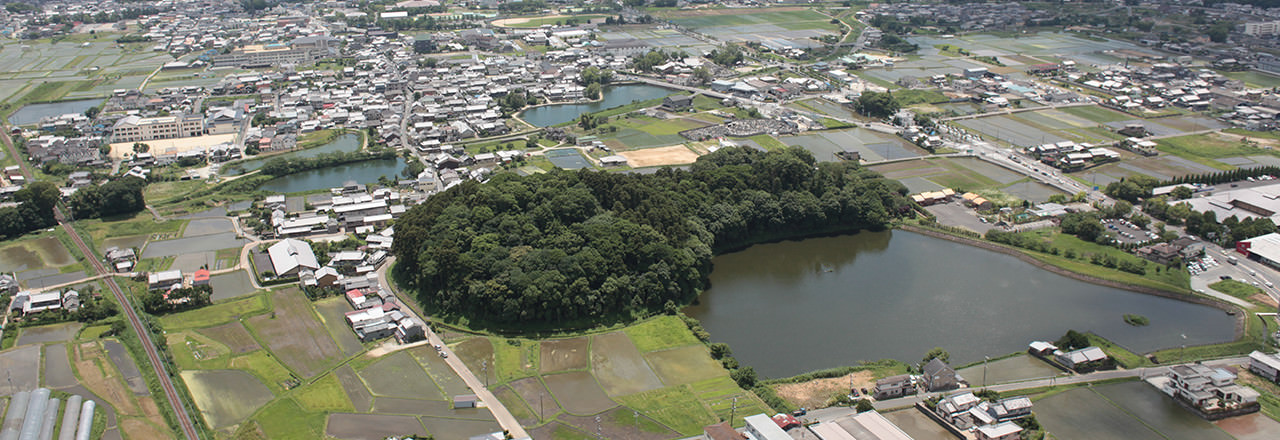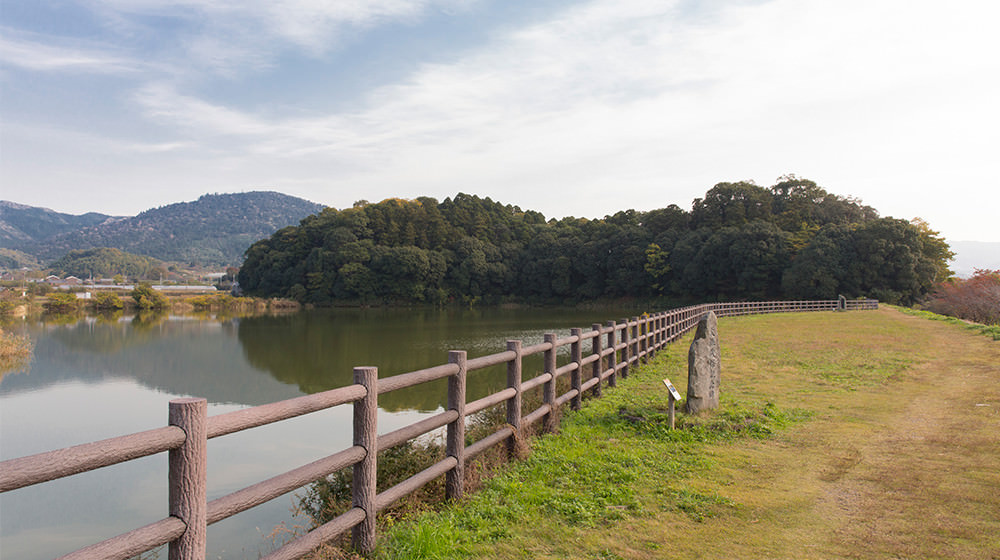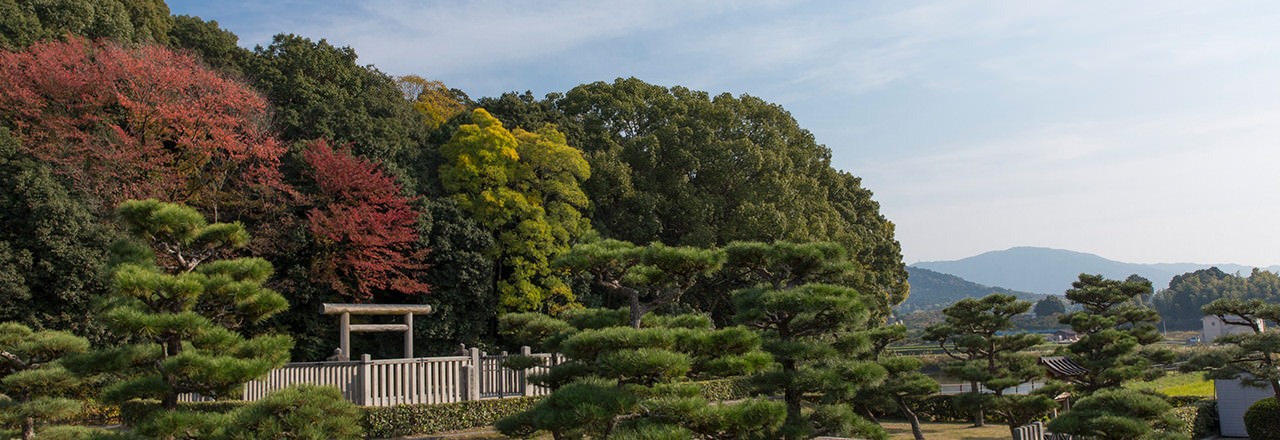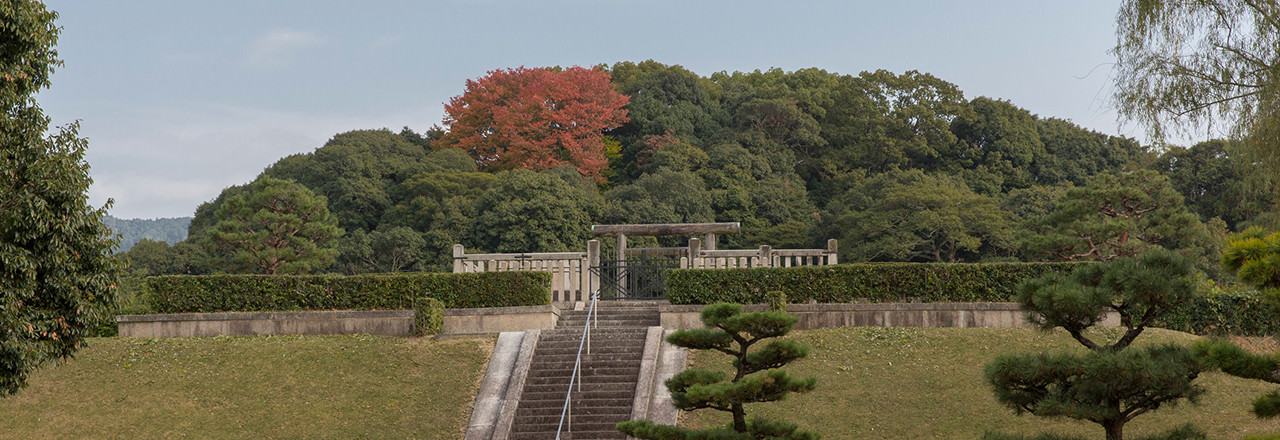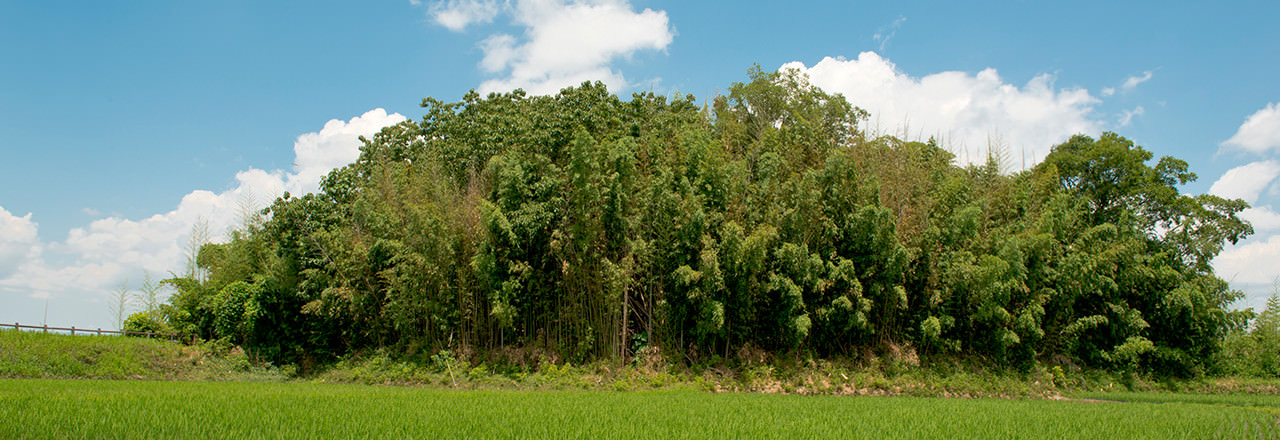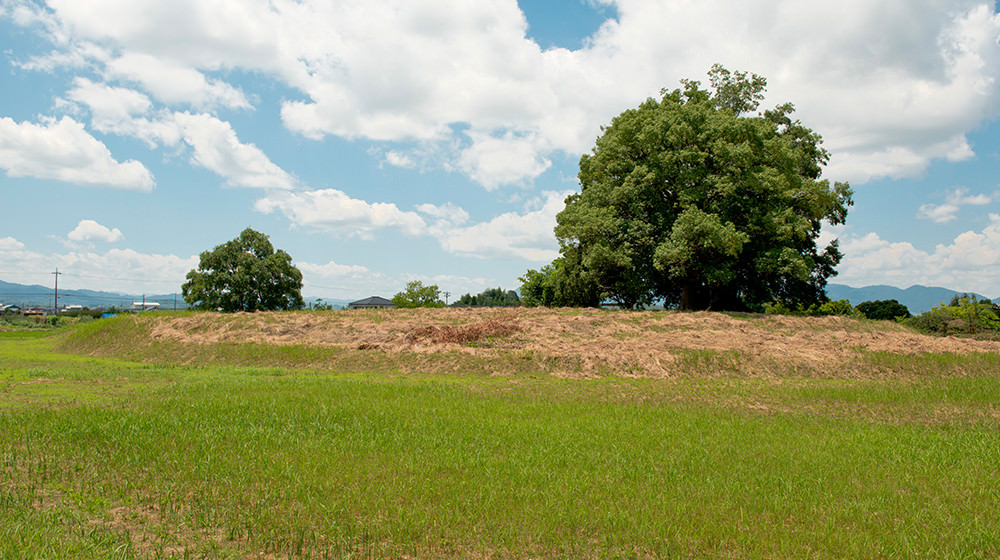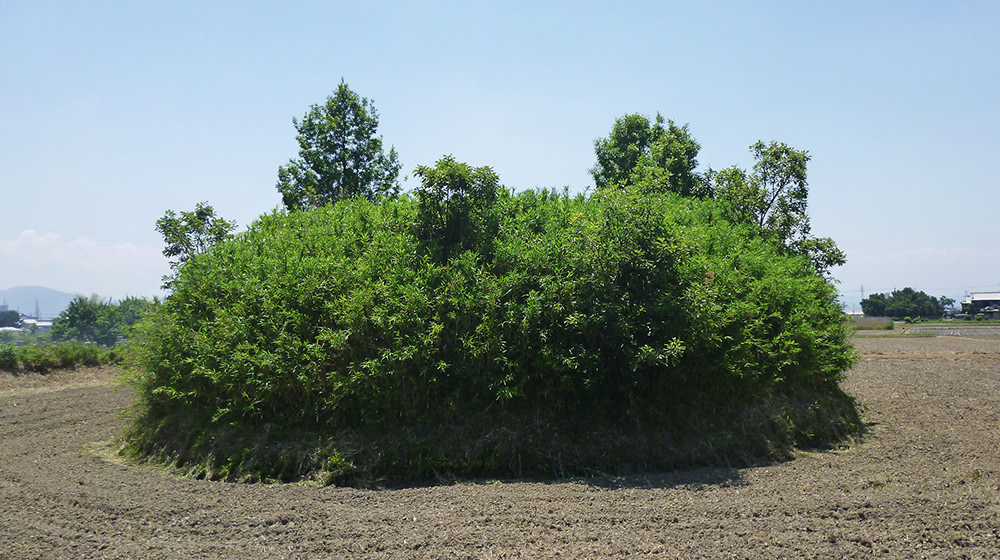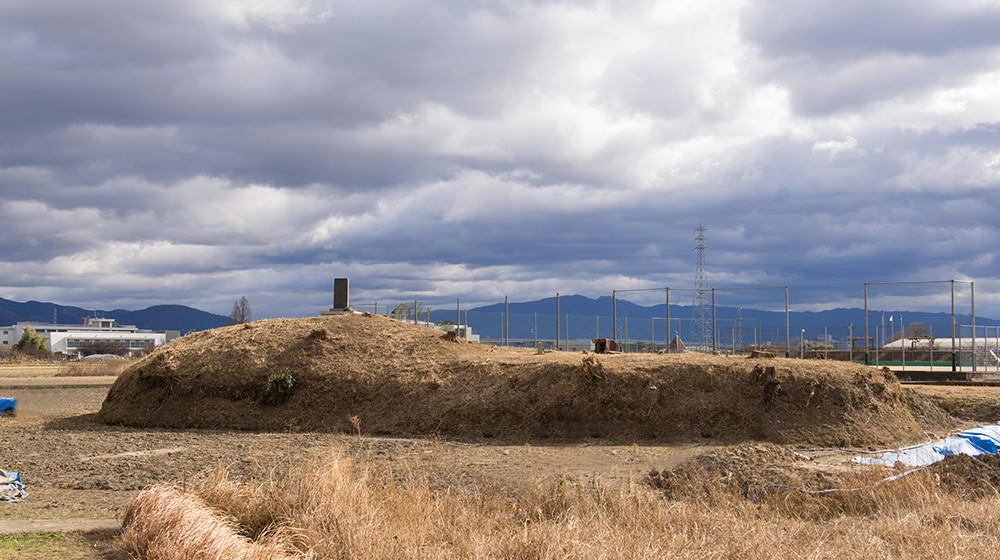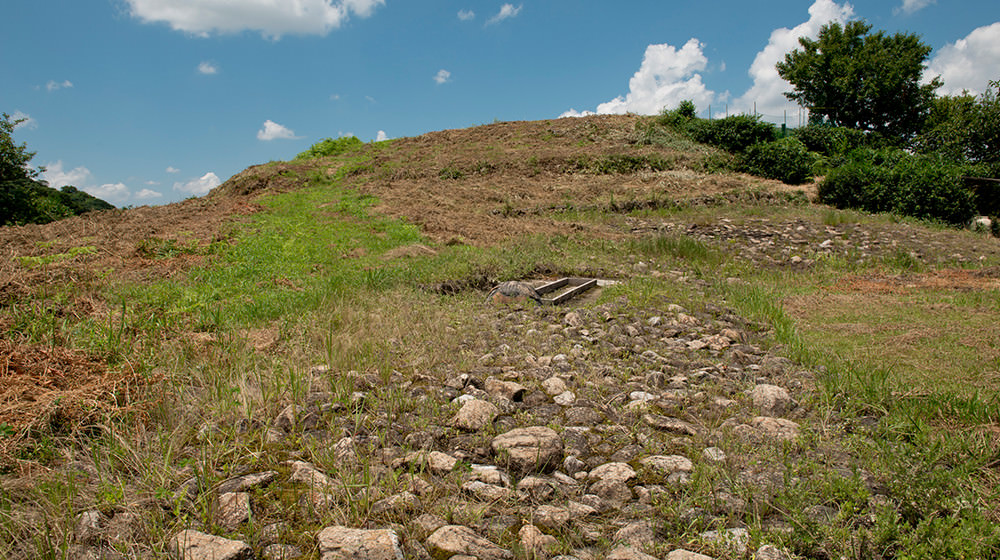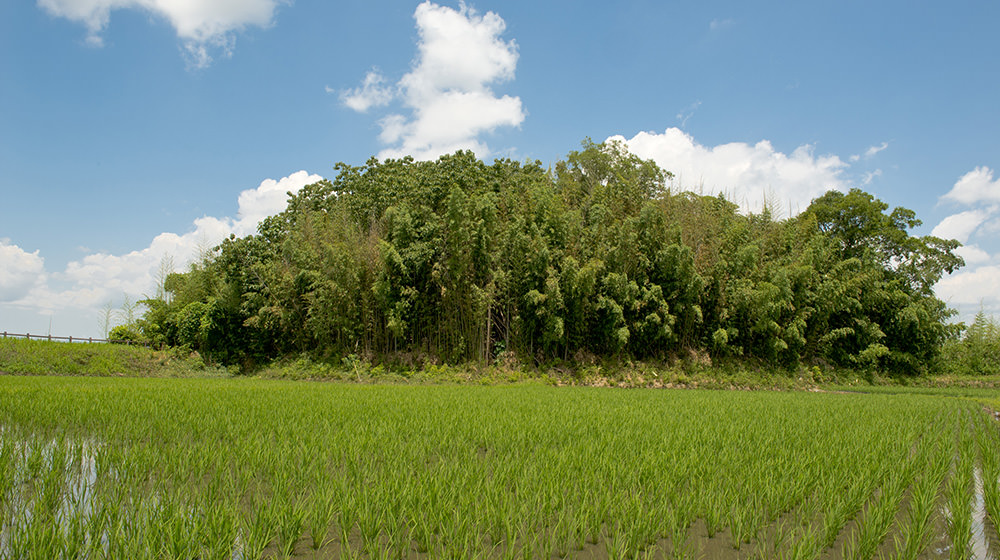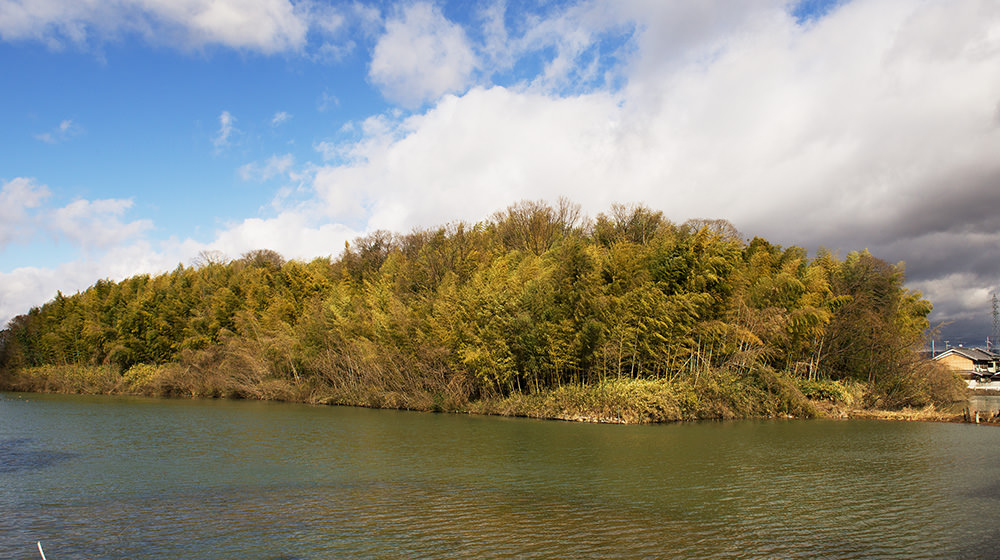
Shimanoyama Burial Mound
The Miyake burial mound group is a set including the 200m-long Shimanoyama Burial Mound(built between the end of the 4th century and beginning of the 5th) and ranging across three towns in the Shiki District of Nara Prefecture. Its use mainly flourished from the latter half of the 5th century to first half of the 6th century. Including smaller burial mounds, a total of 17 have been discovered. The name Miyake derives from the word “Miyake (pronounced the same way but using a different Chinese characters)” which refers to locations established under the direct jurisdiction of the Yamato Dynasty. The king ordered agricultural operations at Miyake, accumulated wealth, and constructed the burial mounds. Influential people from those Miyake are buried in these burial mounds. This Miyake system of direct jurisdiction spread across Japan and became the forerunner of local administration.
